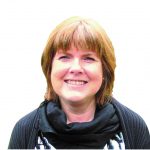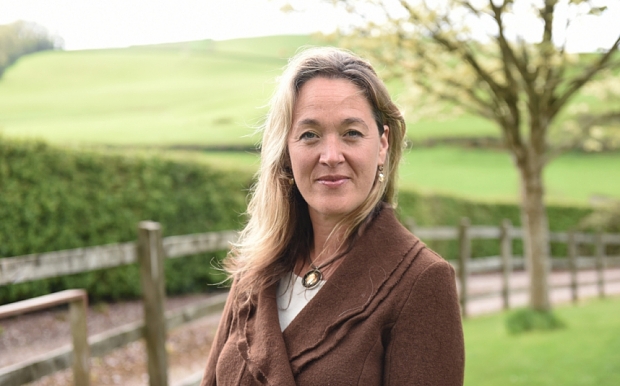Being the child of donor-assisted reproduction can be like having an invisible disability, Susan Gately is told
Joanna Rose was conceived in 1971 using an anonymous sperm donor. She found out when she was eight. Her dad was crying. “I wouldn’t let it go until he told me what the matter was.”
As they walked along he explained he was not her biological father. “I understood it but I didn’t understand it.” Wiping her father’s tears away, she reassured him he was the only father she knew and loved. She tried to look after everyone else’s feelings but was left alone to process what it meant.
She always looked different. Her family of father, mother and brother were smaller than her. Her Jewish Dad had dark skin and curly hair. Joanna – tall, with freckles, white skin and blue eyes, was treated “with surprise like a giant beanstalk”.
Moving to Australia in the 1990s, the implications of her conception began to hit home. One night she had a dream. Her Dad was talking to her on the phone. She was looking through a porthole window into a sterile hospital unit. He stared back at her but his lips were not moving. “I was saying ‘Dad where are you?’ and he was saying ‘I’m here Jo’ but the guy staring at me wasn’t speaking. I woke up in absolute terror.”
Realisation
The realisation struck – she had two fathers, and “the other mustn’t look like my Dad”. She ran to a mirror and tried to make her hair into a beard, a moustache – asking “What does he look like?”
Her search for his identity led to a doctorate in Ethics and Sociology and eventually a Human Rights test case in the UK which upheld a person’s right to obtain information concerning their genetic identity. Seventeen years later, Dr Rose is still searching for her paternal kin, and although a mother herself, feels unsure of her identity. “It’s like an invisible disability. To not know half of where you come from creates a haunting absence.”
Googling ‘egg donor’ immediately brings you into the world of competing national and international fertility clinics”
More than eight million children have been born through IVF since 1978. Hundreds of thousands come through sperm and/or egg donation. Googling ‘egg donor’ immediately brings you into the world of competing national and international fertility clinics. A Spanish clinic gives a “pregnancy and childbirth guarantee” or your money back.
When the same-sex marriage referendum was passed in 2015, same-sex couples gained the same Constitutional rights enjoyed by heterosexual couples. Does this include the right to establish a family? Dr Séan O’Conail, lecturer in Constitutional Law in UCC, referring to Murray vs Ireland which recognised the right to have children – although “it was not an absolute right” – says there is “certainly an arguable case that a [same-sex] couple could claim that they need modern fertility treatments to access their rights.”
By the same token a right has been recognised for “children to know their birth mother but the case was poorly defined so the extent of the right is unclear” he says.
Seeking presumably to vindicate both rights, the government introduced the Children and Family Relationships Act 2015 which lays down rules for Donor Assisted Human Reproduction (DAHR). The Act, which is yet to be implemented fully, bans anonymous sperm and egg donation. Instead clinics performing DAHR must register the details of donors which will ultimately become part of the National Donor-Conceived Person Register “to vindicate the rights of a donor-conceived child to access information on their genetic heritage” according to the Department of Health. When a child is 18 he or she can seek to find out about genetic origins.
Requirement
However the Irish fertility industry is railing against this requirement and has appealed to the Department of Health to lift the ban on anonymous donations for at least 10 years. A submission to the Department from the Irish Fertility Society (IFS) says no donors currently being used in Ireland would meet the criteria in the Act. In other words, most are anonymous and wish to remain so. Currently most sperm comes from Denmark and eggs come from clinics in the Czech Republic and the Ukraine.
Provisions
Meanwhile, the Civil Registration Act 2019 has been signed into law which implements some of the provisions of the 2015 Act, allowing the names of two women to appear on a birth certificate. Under the act, the names of a mother (defined as the woman who gives birth to the baby, who may not be the genetic mother) and a second ‘intending parent’ (like another woman in a same sex partnership) may appear on the birth certificate of a baby.
The intending parent undertakes “to care for, and exercise responsibilities” as if she were the parent. Where two women are registered as parents, a father’s name will not appear on the birth certificate, because he’s not registered as one of the parents.
Even a child growing up in a loving family has a ‘visceral need to know. ‘Who am I?’”
Emma O’Friel M.Psych.Sc. who has researched DAHR says this is “profoundly discriminatory to donor conceived children”. “To say that ownership of a person created in a lab can be transferred to a non-related person is to discriminate against this ‘donor-conceived’ person. Our genetic link is protected whereas the parentage of these children is altered at the hands of a third-party.”
Ms O’Friel, who spoke about DAHR before the Joint Committee on Health in December 2018, says this amounts to condoning false birth certificates. Last year Minister Katherine Zappone was upset when it was revealed that the births of an unknown number of adopted children were registered incorrectly and she said it was a disgrace, she says “and yet we are doing the same thing for another generation in a different guise”.
Genetic origins are a vital component of our identity formation, she says. “Every human being in the world knows that they came from one man and one woman.” Even a child growing up in a loving family has a “visceral need to know. ‘Who am I?’”
There are many questions facing the government, said the Taoiseach in January, “including what forms of surrogacy will be allowed” and whether to continue with anonymous sperm and egg donation. “I can understand why people would want that to continue but if we are pursuing a child-centred policy, where children have the right to know who their parents are and that speaks to our history, perhaps that is something we should not allow.”
Meanwhile, Dr Joanna Rose appreciates the irony of a world in which traceability and transparency is key for agricultural products but not human life. “They want transparency in terms of what they eat, yet you can literally construct human beings internationally,” she says.
“A person can have a surrogate mother in one country, an egg donor in another country and could have been conceived by the sperm of a dead person in another country – this is happening now. And they don’t even have the right to know that on their birth certificate.”


 Susan Gately
Susan Gately Dr Joanna Rose
Dr Joanna Rose 